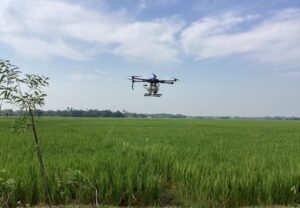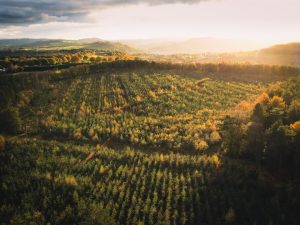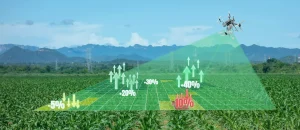In today’s fast-paced world, the agriculture industry has witnessed remarkable technological advancements. Among these innovations, drones have emerged as a game-changer. Drone agricultural survey have transformed the way farmers manage their crops, monitor their fields, and optimize production. In this comprehensive guide, we’ll explore how drones are revolutionizing the agricultural landscape and enhancing productivity.
Understanding Drones in Agriculture
Drones, also known as Unmanned Aerial Vehicles (UAVs), have found their way into agriculture for various reasons. These versatile flying machines are equipped with cutting-edge technology that allows farmers to gather data, make informed decisions, and streamline their operations.
The Benefits of Drones in Agriculture
1. Precision Farming
Drones have ushered in an era of precision farming. These aerial vehicles can capture high-resolution images of the entire field, pinpointing areas that require attention. By doing so, farmers can reduce wastage and optimize the use of resources.
2. Crop Health Assessment
One of the key advantages of using drones is the ability to monitor crop health. Through specialized cameras and sensors, drones can detect signs of disease, nutrient deficiencies, and pest infestations early on, allowing for timely intervention.
3. Increased Efficiency
Drones can cover vast expanses of farmland in a fraction of the time it would take a human. This results in increased efficiency in data collection, making farming operations more productive and cost-effective.
4. Cost Savings
By providing valuable insights into crop Inspection, drones can help farmers make data-driven decisions. This not only boosts productivity but also leads to significant cost savings by reducing the need for excessive chemical use and labor.
Types of Drones for Agriculture
Not all drones are created equal. Various types of drones are available to cater to the specific needs of different farms.
1. Fixed-Wing Drones
Fixed-wing drones are ideal for large, open fields. They are known for their endurance and can cover extensive areas in a single flight.
2. Quadcopters
Quadcopters are the most common type of drone in agriculture. They are highly maneuverable and suitable for smaller fields and areas with irregular shapes.
3. Hybrid Drones
Hybrid drones combine the benefits of fixed-wing and quadcopters. They offer versatility and can adapt to various farm sizes and shapes.
Selecting the Right Drone for Your Farm
Choosing the right drone for your farm is crucial. Factors to consider include the size of your farm, the type of crops you cultivate, and your budget. It’s essential to consult with experts or drone providers to make an informed decision.
Overcoming Challenges
While drones have numerous benefits, they also come with challenges. These include:
1. Regulatory Hurdles
Operating drones in agriculture is subject to strict regulations. Farmers need to be aware of the legal requirements and obtain necessary permits.
2. Initial Investment
Investing in drones and associated technology can be expensive. However, the long-term benefits often outweigh the initial costs.
The Future of Agriculture with Drones
As technology continues to advance, the future of agriculture with drones looks promising. Researchers are working on enhancing drone capabilities, such as autonomous decision-making and even more advanced sensors. Drones are expected to play a pivotal role in addressing food security challenges in the years to come.
Conclusion
Drones for agriculture have truly transformed the way farming is done. They offer precision, efficiency, and cost savings that were once unimaginable. As we move forward, it’s essential for farmers to embrace this technology and harness its potential. By doing so, they can ensure sustainable farming practices and contribute to the ever-growing demand for food worldwide. Drones are not just a tool; they are a revolution in agriculture, and their impact is only set to grow.




